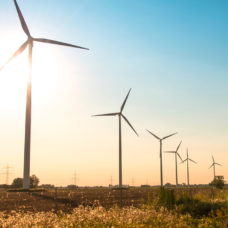Thanks to streaming services and other cloud-based apps, our data demands have grown in recent times. And this comes at a high cost to the environment.
Internet connection has become a part of our everyday lives. Whether we’re binging our favorite shows or scrolling through our social media feeds, we rely on that connection to — well, connect with the world.
Between the recent surge in wearables and smart home devices, data demand has been on a steady rise. In the future, we could have connected dishwashers, microwaves, or even toothbrushes.
Be that as it may, the demand for more data comes at a considerable cost to the environment.
In a statement to the press, an environment and technology expert at MaRS Discovery District, an innovation hub in Toronto, Jane Kearns said:
“We are using an immense amount of energy to drive this data revolution…It has real implications for our climate.”
While our devices may not draw so much power, the servers that act as electronic brains do. Often described as “cloud,” these servers exist in data centers, and they require massive energy to work.
How Much Power Does a Data Center Need?
According to reports, the world’s data centers alone could devour as much as 651 terawatt–hours of electricity in the next year. And that’s only the beginning.
A researcher at Huawei Technologies Sweden, Anders Andrae, suggested that data centers could more than double their power demand in the next decade.
In his International Journal of Green Technology paper, Andrae predicts that 11 percent of the global energy would go to computing by 2030. And cloud-based services would account for a sizable portion of the power demand.
So, what’s driving the data demands?
Canadian networks analytics company Sandvine points out that video streaming is the primary culprit. At the moment, streaming services like Netflix and Amazon Prime gobble up about 60.6 percent of all internet traffic.
And it could only get worse. As the adoption of 5G cellular networks increases, so would the growth of the Internet of Things and smart home devices. This could send data demands through the roof.
For example, self-driving vehicles require a continuous flow of data to remain on the road.
“This will become completely unsustainable by 2040,” Andrae wrote.
What can we do?
Greener Solutions to Meet Data Demands
Some top tech companies in the world are currently working towards reducing the impact of power demands from data centers.
For example, Google generates about 735,000,000 kWh of green energy per year, which it uses to power its data centers. Similarly, Amazon Web Services says it exceeded 50 percent renewable energy usage in 2018.
Meanwhile, a Canada-based firm, Ranovus, is developing a greener solution to data management. The company is expanding the information transmission capacity in data centers to reduce energy demands.
According to Ranovus CEO Hamid Arabzadeh, the approach can reduce the energy required for data transfer by 80 percent, hence cutting costs.
Demand for bandwidth will always grow, and this will put pressure on data centers. However, users don’t have to endure a subpar quality of experience, the CEO said.


















GETTING YOUR LOST FUND RECOVERED.
I was able to get my funds recovered with the help of a recovery expert named Jeff Silbert and he helped and assisted me withdraw all my funds in full just with little effort. Contact him now if you need get his help WhatsApp. + 84 94 767 1524 Ema!l jeffsilbert39 gma!l. com.